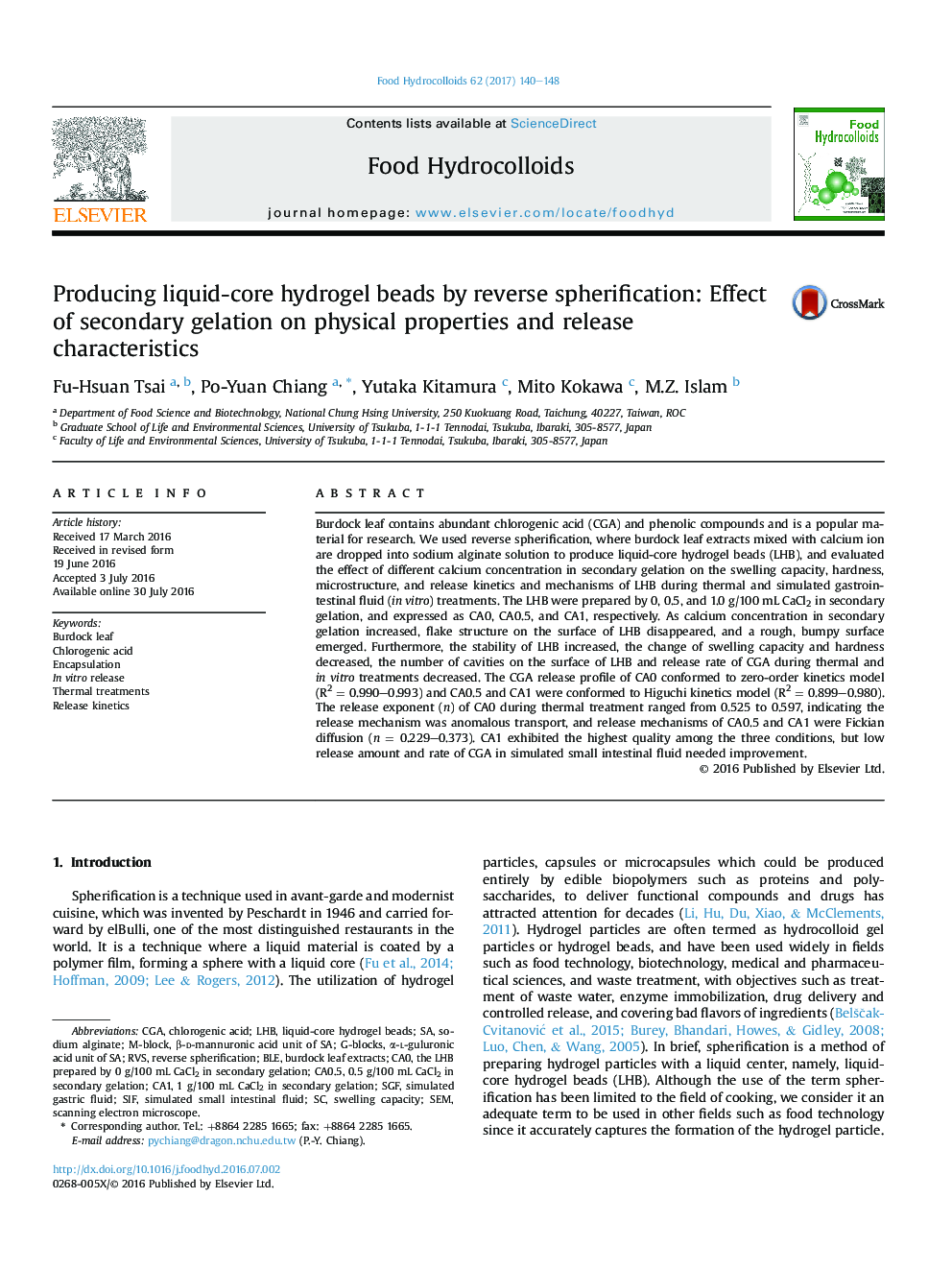| کد مقاله | کد نشریه | سال انتشار | مقاله انگلیسی | نسخه تمام متن |
|---|---|---|---|---|
| 604008 | 1454415 | 2017 | 9 صفحه PDF | دانلود رایگان |
• Producing LHB as a delivery and protection system by reverse phase spherification.
• Secondary gelation prevented chlorogenic acid releasing from LHB.
• The higher calcium concentration made LHB more stable during thermal treatment.
• Release mechanism of LHB were Fickian diffusion and anomalous transport.
Burdock leaf contains abundant chlorogenic acid (CGA) and phenolic compounds and is a popular material for research. We used reverse spherification, where burdock leaf extracts mixed with calcium ion are dropped into sodium alginate solution to produce liquid-core hydrogel beads (LHB), and evaluated the effect of different calcium concentration in secondary gelation on the swelling capacity, hardness, microstructure, and release kinetics and mechanisms of LHB during thermal and simulated gastrointestinal fluid (in vitro) treatments. The LHB were prepared by 0, 0.5, and 1.0 g/100 mL CaCl2 in secondary gelation, and expressed as CA0, CA0.5, and CA1, respectively. As calcium concentration in secondary gelation increased, flake structure on the surface of LHB disappeared, and a rough, bumpy surface emerged. Furthermore, the stability of LHB increased, the change of swelling capacity and hardness decreased, the number of cavities on the surface of LHB and release rate of CGA during thermal and in vitro treatments decreased. The CGA release profile of CA0 conformed to zero-order kinetics model (R2 = 0.990–0.993) and CA0.5 and CA1 were conformed to Higuchi kinetics model (R2 = 0.899–0.980). The release exponent (n) of CA0 during thermal treatment ranged from 0.525 to 0.597, indicating the release mechanism was anomalous transport, and release mechanisms of CA0.5 and CA1 were Fickian diffusion (n = 0.229–0.373). CA1 exhibited the highest quality among the three conditions, but low release amount and rate of CGA in simulated small intestinal fluid needed improvement.
Figure optionsDownload as PowerPoint slide
Journal: Food Hydrocolloids - Volume 62, January 2017, Pages 140–148
